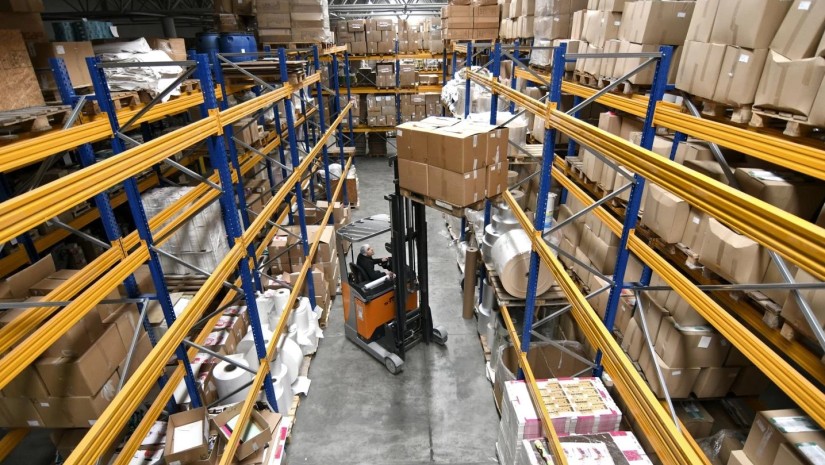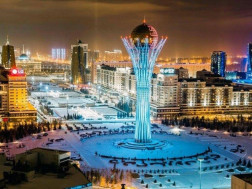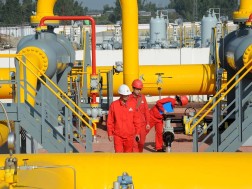As global investors increasingly turn their attention to emerging markets, the Trans-Caspian International Transport Route—known as the “Middle Corridor”—is gaining recognition as a critical link in the logistics and supply chain landscape. This strategic route, which connects China to Europe via Central Asia and the Caspian Sea, is becoming a focal point for development, bolstered by a €10 billion investment program led by the European Investment Bank (EIB) and the European Bank for Reconstruction and Development (EBRD), with 20 countries expressing interest or involvement.
Kazakhstan, the largest economy in Central Asia, is positioning itself at the centre of this transformation. President Kassym-Jomart Tokayev has made it clear that transport and logistics will be pivotal in driving the nation’s economic growth. He has tasked his administration with making Kazakhstan a fully-fledged logistics and transit hub in Eurasia, with the sector's contribution to GDP expected to grow by 50%, reaching 9% within the next three years.
Kazakhstan's Infrastructure Push: A Gateway to Eurasia
At the heart of Kazakhstan’s development strategy is investment in infrastructure. The country has modernized its transport networks, built energy facilities, and established industrial zones to facilitate trade and strengthen its position as a regional hub. These enhancements not only support Kazakhstan’s economic ambitions but also provide the connectivity needed for the country to thrive as a critical node in global trade routes.
Central Asia’s Untapped Potential
Central Asia, a region comprising Kazakhstan, Kyrgyzstan, Tajikistan, Turkmenistan, and Uzbekistan—home to a combined population of 70 million—has largely remained underdeveloped in terms of logistics infrastructure. Many facilities in the region were inherited from the Soviet era, and until recently, there was little demand for modern warehousing solutions. However, several key developments have sparked new interest in this historically overlooked region:
China’s Belt and Road Initiative (BRI): Since 2013, China’s ambitious infrastructure plan has laid the groundwork for improved trade routes across Central Asia, with the Middle Corridor serving as a key component.
E-Commerce Boom: The COVID-19 pandemic (2019–2021) spurred a sharp increase in e-commerce, driving demand for high-quality warehousing facilities in the region.
Economic Growth and Sanctions on Russia: Central Asia's young, tech-savvy population has fuelled rapid economic growth, while sanctions imposed on Russia, a major regional trade partner, since 2022 have prompted the development of alternative transit routes, further increasing the strategic importance of the Middle Corridor.
These factors have created a unique opportunity for Central Asia to position itself as a modern-day Silk Road, revitalizing its ancient role as a critical bridge between East and West.
The Middle Corridor: A Shorter Route to Europe
The Middle Corridor offers the shortest land-sea route from China to Europe, spanning 4,250 kilometres of rail lines and 500 kilometres of seaway. Goods travel through Kazakhstan, Azerbaijan, and Georgia, crossing the Caspian Sea before continuing through Turkey or to the EU via Black Sea ports in Bulgaria and Romania. This route bypasses Russia, providing a vital alternative in the face of geopolitical tensions.
By 2027, with adequate investment, the Middle Corridor and the North-South Corridor (linking Central Asia to the Persian Gulf) are expected to handle up to 10 million tonnes of cargo annually. However, realizing this potential requires significant capital injections, particularly in supply chain infrastructure. The EBRD estimates that €18.5 billion in cumulative investments will be needed to make the Middle Corridor fully operational.
A Surge in Warehousing Demand
The rapid development of Central Asia’s logistics sector has triggered an unprecedented surge in demand for warehousing facilities. This demand is driven by four main customer segments:
International Brands: Major companies seeking new distribution points in Central Asia.
Online Marketplaces: The rise of e-commerce across the region has created a need for modern logistics hubs.
Domestic Retailers: Central Asian businesses are expanding and require up-to-date warehousing infrastructure.
Foreign Logistics Companies: Predominantly from Russia, these companies are increasingly looking to Central Asia as a strategic location.
In Kazakhstan alone, it is estimated that around 1.2 million square meters of modern warehouse space are required to meet the needs of these customers. However, the country’s existing quality warehouse stock barely exceeds 1.4 million square meters, providing only 0.07 square meters of space per capita—a far cry from international benchmarks.
Expanding Capacity: The Road Ahead
Kazakhstan is set to increase its warehousing capacity over the next three to four years, with projections showing that by 2027, the country will offer 0.16 square meters of warehouse space per capita. While this represents significant progress, it still lags behind other regions, such as Turkey and Belarus, and remains far below the capacities of Russia, China, and Western Europe.
Despite these challenges, Central Asia's growing role in the global supply chain cannot be overlooked. As the region invests in modern infrastructure and logistics, it is poised to become a crucial player in international trade, offering new opportunities for investors and businesses alike. The revival of the ancient Silk Road is no longer just a vision—it is becoming a modern-day reality.
Rainer Michael Preiss, Partner & Portfolio Strategist at Das Family Office in Singapore
















